
Is Wood Or Composite Cladding Better?
Are you wanting to start your next project and wanting to know if wood or composite cladding better? A Straightforward Guide
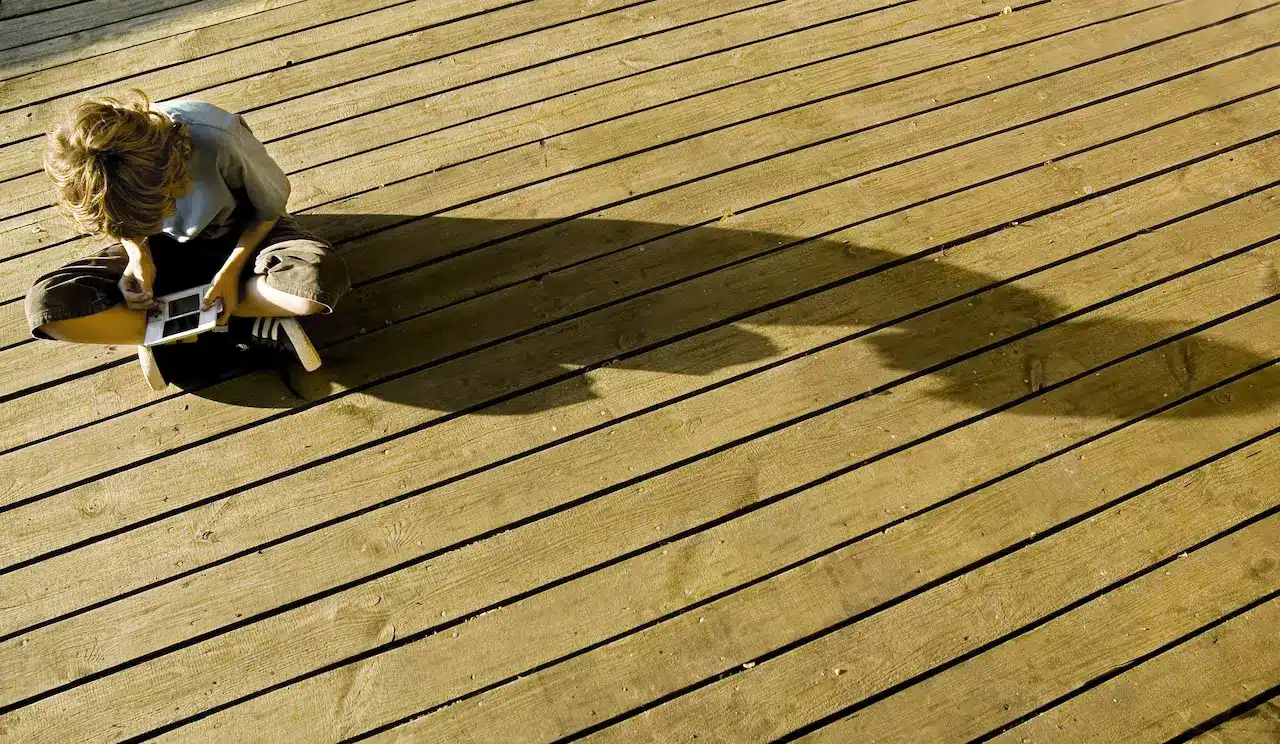
Selecting the right timber for outdoor decking is the crucial first decision for all homeowners. The material choice influences not only the aesthetic appeal of the deck but also its longevity and maintenance requirements.
Local woods like treated pine are affordable and commonly used due to their resistance to decay, termites, and fungi. Hardwoods like Silvertop Ash are favoured for their natural durability, fire resistance, and minimal warping in Australia’s challenging climate.
On the other hand, composite decking offers a different route, where maintenance and longevity are prioritised over natural wood characteristics.
When considering which timber to use for your decking, factors such as environmental exposure, desired lifespan, and budget will help guide your decision. Whether opting for the natural charm of hardwood or the engineered resilience of composites, the choice must be informed by both the material properties and the specific demands of the Australian outdoors.
Table of Contents
Toggle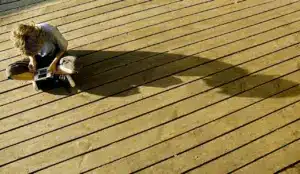
Choosing the right decking material is critical for both the longevity of your deck and the aesthetic appeal of your outdoor space, so let’s explore the attributes of various decking timbers, compare hardwoods and softwoods, and consider composite decking as a modern alternative…
Quality decking timber is characterised by its longevity, ability to withstand the elements, and visual attractiveness. It should possess excellent dimensional stability, which minimises swelling, shrinking, and distortion. For instance, Spotted Gum is renowned for its fire and stain resistance, making it well-suited for dry climates where timber’s resistance to cracking is essential. Similarly, Silvertop Ash is another hardwood that’s appreciated for its durability and minimal warping, adapting well to the Australian environment.
Hardwoods, sourced from broad-leaved trees, generally offer greater density and durability than softwoods. They are ideal for deckings exposed to heavy foot traffic and harsh weather conditions. Hardwoods such as Spotted Gum are popular in Australia due to their natural beauty and resilience. On the other hand, softwoods like treated pine are cost-effective and versatile. They are pressure-treated to resist decay and termites, making them a practical option for those with budget constraints.
For maintenance-conscious consumers, composite decking materials present an appealing alternative. These engineered products combine wood fibres with plastic, often recycled, to create planks that require less upkeep than traditional wood decking. Composites resist fading, staining, and rot, offering consistent aesthetics with minimal maintenance. Although sometimes higher in initial cost than timber, composites save on long-term upkeep expenses.
The below table compares different characteristic features of the materials:
| Feature | Hardwoods | Softwoods | Composites |
| Durability | High (ideal for heavy use) | Moderate (with treatment) | High (resistant to fading, rot) |
| Maintenance | Regular oiling or sealing | Regular treatment needed | Low (minimal upkeep required) |
| Aesthetic | Natural wood appearance | Less variety than hardwoods | Consistent, uniform appearance |
| Cost | Higher initially | More affordable | Varies, often higher initially |
| Environmental | Sustainable sourcing varies | Often more easily renewable | Recycled materials in composites |
This table illustrates the contrast between material choices regarding durability, maintenance, appearance, cost, and environmental considerations. It highlights the strengths and limitations of each material, aiding consumers in making an informed decision for their decking project.
Decking materials vary in appearance, durability, and maintenance requirements. Here are some of the best decking timbers and composites in Melbourne, reflecting both the natural beauty of timber and the convenience of composites.
Merbau, known for its durability and natural resistance to insects, is a popular choice for decking in Australia. Available in sizes such as 90x19mm and 140x19mm, Merbau’s rich colouring and longevity, often spanning over 30 years with proper care, make it a premium choice for any outdoor area.
Spotted Gum stands out with its distinctive colour variations and grain patterns. It is valued for its strength and longevity, making this native Australian hardwood a wise option for decking that is exposed to the elements.
ModWood Composite Decking is manufactured in Australia using recycled plastic and wood chips for those preferring a sustainable, low-maintenance alternative to traditional timber. It is long-lasting, eco-friendly and imitates the look of natural timber. Sizes like 88x23mm and 137x23mm are commonly used for various decking projects.
Australian Turpentine is known for its resilience and ability to withstand harsh conditions, including resistance to decay and termites. The typical profile for this timber is 135mmx19mm, suitable for an enduring and hardwearing deck.
Silvertop Ash features unique pencil streaks and visible growth rings, providing a distinctive choice for decking. Its natural durability makes it suitable for use in areas that face the challenges of weather and wear.
Treated Pine is a cost-effective and versatile timber decking option. It’s been pressure-treated to resist decay, fungi and termites, with common decking profile sizes such as 90x22mm and 140x22mm. Although less durable than some hardwoods, treated pine offers an economical solution for decking needs.
Choosing the right timber for decking requires careful consideration of several factors. Each aspect contributes to the overall performance and longevity of the deck.
Durability Rating: Timbers vary in their ability to withstand outdoor conditions. Hardwoods like Australian Turpentine and Silvertop Ash usually have higher durability ratings, making them resistant to decay, fungi, and termites. These species are often selected for their solid track record in performance over time.
Resistance to Elements: Pressure-treated pine is treated to resist decay and pests, presenting a cost-effective solution. However, hardwoods like Spotted Gum have natural fire resistance, an essential factor in bushfire-prone areas.
Appearance: The timber chosen can significantly affect the deck’s visual impact. Species like Merbau are favoured for their striking appearance, aligning with a desire for an aesthetically pleasing outdoor space. Timber provides various grain patterns and colours, from lighter hues to deep, rich tones.
Routine Upkeep: Timbers demand varying levels of maintenance. While treated pine is affordable, it may require more upkeep to maintain its condition compared to dense hardwoods. Regular oiling and sealing can extend the life of the deck and maintain its appearance.
Long-Term Consideration: Investing in sustainably sourced, resilient timbers can reduce the need for ongoing upkeep. Woods such as Spotted Gum are naturally durable, which may lead to less frequent maintenance work, even if the initial investment is higher.
Sustainably Harvested Wood: It’s crucial to consider the environmental impact of timber selection. Wood sourced from sustainably managed forests ensures that the decking project contributes to responsible forestry practices.
Eco-Friendly Choices: Selections such as Spotted Gum are not only durable but also eco-friendly due to their non-toxic treatment process and sustainability credentials. Such choices align with environmental conservation efforts, providing a responsible alternative for decking projects.
Choosing the right materials and layout impacts both the aesthetics and longevity of your decking. The focus here is on ensuring an attractive design that serves its intended function while maintaining quality.
Wood species choice is fundamental to deck design, influencing both beauty and durability. Common Australian hardwoods like Spotted Gum and Merbau offer rich colours and high resilience. Other alternatives such as Silvertop Ash offer the aesthetic of tropical hardwoods along with increased durability and a decreased environmental footprint. When choosing, it’s important to consider the local climate conditions and the anticipated wear and tear.
The layout of your decking should blend form and function, presenting an appealing visual while fulfilling your space requirements. Wide board layouts can mimic the aesthetic of a jetty, while hidden fasteners offer a clean finish. Consider the flow of your garden or outdoor area and how the deck will accommodate movement and furniture.
The practical use of your deck should guide your choice of timber. Softwoods like treated pine are cost-effective for casual use but may lack the longevity of hardwoods. Hardwoods are pricier but justify their cost in high-traffic or exposed environments due to their superior resistance to decay and pests. For areas exposed to the elements, consider wood like Spotted Gum, designed for minimal maintenance over decades.
Successful deck construction and enduring quality rely on proper installation and upkeep. These tasks are critical for a long-lasting, low-maintenance deck.
Proper preparation of the site and materials is the foundation of good deck construction. This includes choosing the right timber and ensuring a stable, level area to build upon. The construction area should be clear of debris and vegetation. Additionally, it’s essential to use treated timber for joists to prevent decay.
Deck installation begins with the correct spacing and alignment of joists. These horizontal members should be spaced according to the decking material specifications.
Deck longevity is enhanced by regular maintenance. To preserve the timber:
Deck maintenance schedules can vary based on the type and quality of timber used. Generally, maintenance tasks like staining and oiling should occur every one to two years to maintain the deck’s appearance and durability.
For help choosing the best wood for your deck, contact the team at Rex Paine Timber & Hardware today.
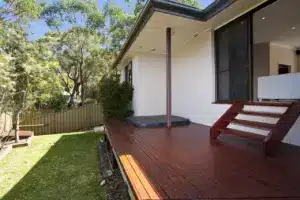
SEE ALL

Are you wanting to start your next project and wanting to know if wood or composite cladding better? A Straightforward Guide
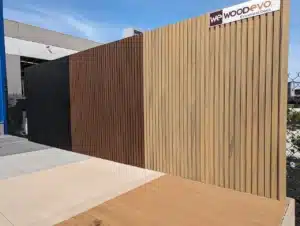
Introducing WoodEvo: Premium Composite Cladding Now Available at Rex Paine Timber At Rex Paine Timber, we takes pride in offering top-quality
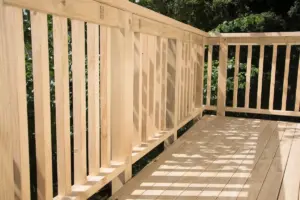
How to Build a Deck in Australia Deck building is a favourite DIY project. When you plan one, the amount of work

Are you wanting to start your next project and wanting to know if wood or composite cladding better? A Straightforward Guide

Introducing WoodEvo: Premium Composite Cladding Now Available at Rex Paine Timber At Rex Paine Timber, we takes pride in offering top-quality

How to Build a Deck in Australia Deck building is a favourite DIY project. When you plan one, the amount of work